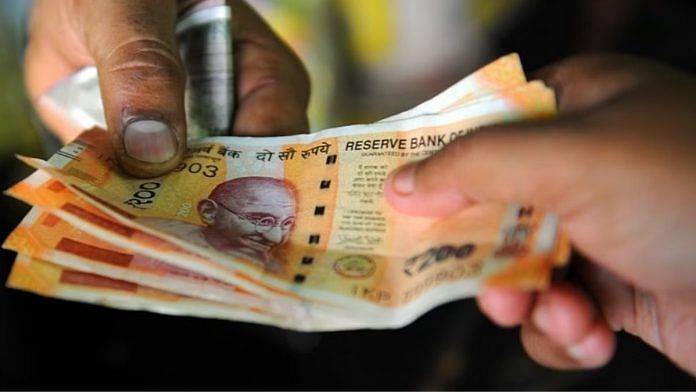There are concerns that lenders have had to take large haircuts on firms that go through the Corporate Insolvency Resolution Process or CIRP under the Insolvency and Bankruptcy Code or IBC. The unease over low recoveries resulted in the National Company Law Appellate Tribunal, or NCLAT, ordering restarting of a concluded resolution process of Videocon Industries in January this year.
Revisiting commercial decisions taken by the Committee of Creditors (CoC) increases uncertainty in the IBC process. While anxiety about low recoveries from the IBC may be valid, we should revisit how large the haircuts are and investigate the factors that drive this outcome. Improvements in recoveries are more likely to result from systematic fixtures to overall policy environment as opposed to revisiting individual cases.
Importance of commercial wisdom
The NCLAT ruling on Videocon mentioned earlier ordered the re-opening of a resolution plan that was accepted by a CoC majority even though only 4.15 per cent of the admitted claims were recovered. It is understandable that the court is concerned over low recoveries. However, this decision seems to go against a Supreme Court ruling, which said that “the adjudicating authority or the appellate authority cannot sit in an appeal over the commercial wisdom of CoC.”
The decision also seems contrary to the IBC, which intended to reduce the scope of such judicial discretion. Ultimately, the question of what the alternative to the 4.15 per cent recovery was, is best understood by members of the CoC themselves. There may be merit in trusting the commercial wisdom of stakeholders, even if, in particular instances, it goes against our notions of fairness.
Also read: Over 22% of consumer complaints in India in last 4 years are linked to e-commerce sector
Overstating haircuts
We may be overstating the impact of haircuts lenders see in the IBC. When a firm gets into trouble and anticipates that it will not be able to repay its loans, it typically seeks to restructure its debt obligations with the lender. A lender makes a decision based on a judgement about the firm’s business, and the impact it can have on its provisioning. By the time a firm comes to the IBC, one can assume that the restructuring process has not worked. While we don’t have adequate data for whether restructuring became more effective because of the potential threat of the IBC, conversations with industry players suggest that it did.
Another metric of voluntary settlements is withdrawals under Section 12A of the Bankruptcy Code. Seven hundred and forty of the 5,889 firms that have come to IBC have been withdrawn under 12A, while 552 have led to a resolution plan. Clearly, some voluntary mechanism is working for debtors and creditors, and presumably, the lender is getting a better deal from this settlement than the recovery numbers reflect.
According to the Insolvency and Bankruptcy Board of India (IBBI), about 35 per cent of CIRPs that resulted in a resolution plan were earlier with the Board for Industrial and Financial Reconstruction (BIFR) and/or defunct. It is not surprising that creditors cannot recover much from these firms. Potential buyers may not want to invest in a firm that has little to no value as a going concern. The liquidation value of these firms would be even lower. The fact that there were bidders who could see some value in these firms should actually be celebrated.
On average, creditors have been able to realise 31 per cent of their claims in CIRPs, which led to a resolution plan. This number does not account for lenders’ recoveries, made either because of improved restructuring even before the firm enters IBC, or because of withdrawals under Section 12A. This is a reasonable outcome for a system that has had to bear the brunt of a legacy of Non-Performing Assets (NPAs).
Also read: Modi govt’s new IT rules don’t empower consumers, but expand State power over online content
Causes of low recoveries
There are several causes for low recoveries. Delays in courts have a direct bearing on the recoveries that banks are able to make from the IBC. The more time a firm spends in the process, the more value it loses. The average time taken for the closure of an IRP is 561 days. The policy focus should be on how these delays can be reduced. A few days ago, the Supreme Court said that merely increasing judges would not improve pendency. There is merit in this argument, as what is also required is process improvement at the tribunals.
The market for distressed firms in India is a buyers’ market, and it is possible that these firms are driving a hard bargain. The small size of the market is because of two reasons. First, the distressed debt market is in its early stages and will take time to evolve. Second, there has been an effective elimination of promoters from the bidding process because of Section 29A of the IBC. If we want better recoveries, perhaps we should look for ways to expand the pool of potential buyers and increase competition for these distressed assets. It could be that several bankrupt firms should not have been given loans in the first place. However, this cannot be solved through reform of the IBC. A long-term improvement will only happen through systemic reform of all factors contributing to the problem.
The author is an associate professor at the National Institute of Public Finance and Policy (NIPFP). She tweets @resanering. Views are personal.
(Edited by Zoya Bhatti)



